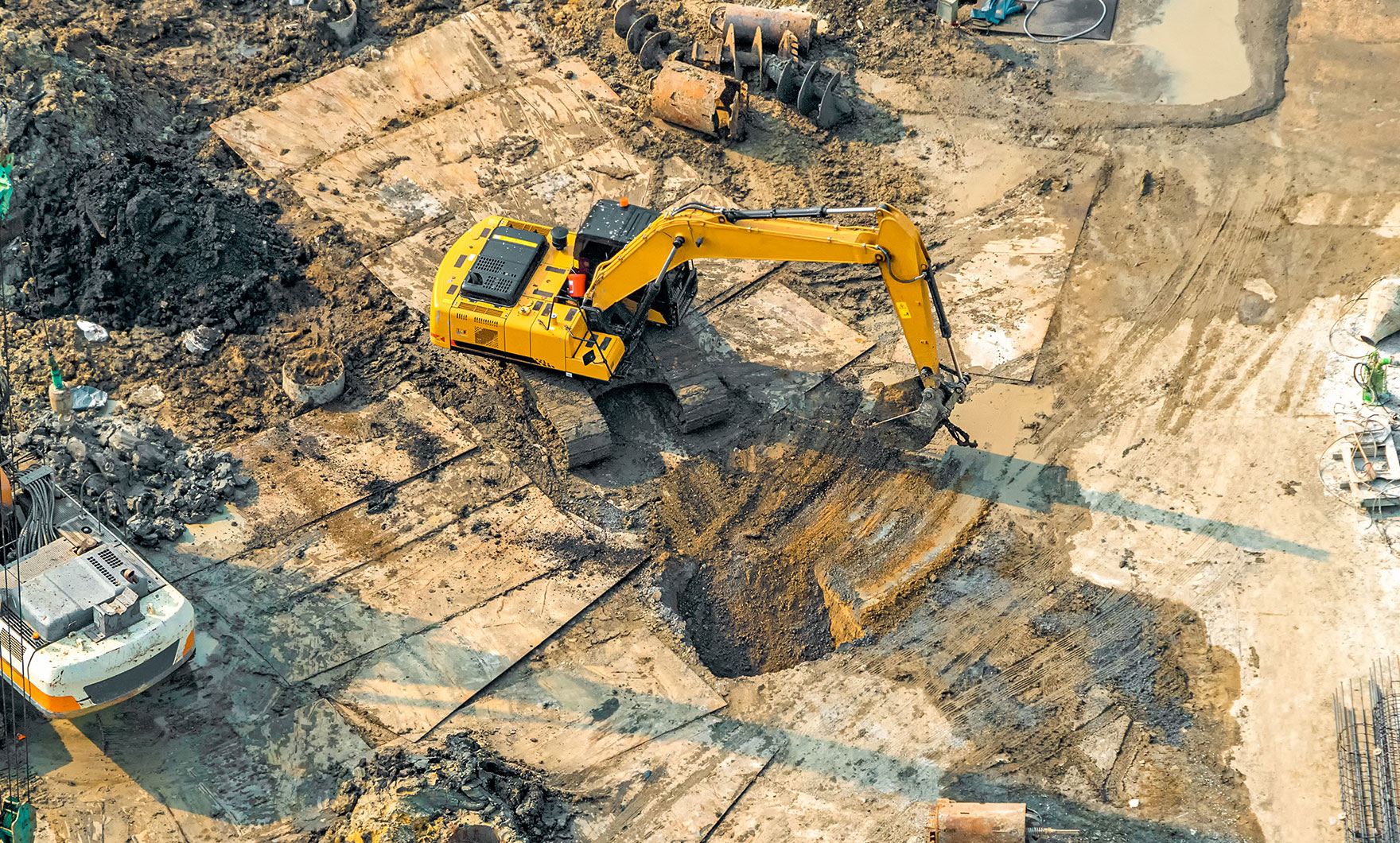Checking Out the Essential Principles and Applications of Geotechnical Engineering for Sustainable Infrastructure Development
The crossway of geotechnical design and sustainable framework advancement offers a compelling possibility to boost both design efficiency and environmental obligation. By understanding crucial concepts such as soil technicians, site characterization, and foundation layout methods, designers can create options that are not only efficient yet also lessen eco-friendly footprints.
Trick Concepts of Geotechnical Engineering
Comprehending the key principles of geotechnical design is important for creating lasting infrastructure (geotechnical engineer description). This self-control concentrates on the communication in between soil, rock, and structures, playing a critical duty in the security and efficiency of design projects. The foremost principle is the evaluation of subsurface problems with site examinations, which give valuable details concerning dirt buildings, stratification, and groundwater levels
Another essential concept is the application of reliable stress theory, which helps engineers understand how soil behavior modifications under differing lots. This understanding is critical for reviewing the bearing ability of structures and ensuring that frameworks can withstand both dynamic and static forces.
Additionally, the principles of soil-structure communication and incline security are important to geotechnical style, as they inform decisions on the placement and design of retaining embankments, slopes, and walls.
Lastly, geotechnical engineers should consider sustainability by advertising making use of in your area sourced materials, minimizing ecological effect, and enhancing designs for long life. By sticking to these principles, geotechnical engineering contributes significantly to the production of resistant and lasting infrastructure that meets the needs of culture while securing the atmosphere.
Dirt Mechanics and Its Value
Soil auto mechanics acts as the foundation of geotechnical engineering, offering the clinical principles required to evaluate the behavior of dirt under different problems. Understanding dirt technicians is vital for predicting just how dirt will react to loads, adjustments in wetness web content, and other ecological factors. This expertise permits engineers to make structures that can hold up against the pressures applied by the soil and make sure security and safety.
The research of dirt auto mechanics incorporates various elements, consisting of soil classification, shear compressibility, permeability, and stamina. These aspects affect the design of foundations, preserving walls, and other geotechnical frameworks, making it essential to examine dirt residential or commercial properties precisely. The shear stamina of dirt straight impacts the stability of slopes and excavations, while compressibility affects settlement predictions for buildings.
Additionally, soil auto mechanics plays a vital role in sustainable infrastructure development. By understanding the soil's behavior, engineers can minimize ecological influences, optimize material use, and boost the long life of frameworks. This assimilation of dirt auto mechanics into geotechnical engineering practices not only guarantees security but also adds to the total sustainability of building and construction tasks, advertising effective source administration and environmental stewardship.
Site Characterization Techniques
Reliable site characterization strategies are vital for collecting vital information concerning subsurface conditions before building - geotechnical companies in south africa. These strategies supply valuable understandings into soil residential or commercial properties, rock formations, groundwater degrees, and potential geohazards, consequently informing job layout and mitigating dangers
One extensively employed technique is drilling, which permits direct tasting of dirt and rock layers. This can be complemented by in-situ screening, such as Basic Infiltration Examinations (SPT) and Cone Penetration Examinations (CPT), to examine dirt toughness and stratification. Geophysical techniques, including seismic refraction and electrical resistivity studies, make it possible for non-invasive assessment of subsurface products and frameworks, supplying a broader point of view on geological problems.
Moreover, lab screening plays an essential role in examining dirt examples obtained from drilling. Examinations such as grain size evaluation, Atterberg restrictions, and triaxial shear tests produce crucial information on soil behavior under different loading problems.
Incorporating these site characterization methods not just improves the understanding of website problems yet additionally sustains lasting infrastructure development by guaranteeing that jobs are created with ideal safety and security margins and efficiency requirements. Hence, a comprehensive site characterization is vital for notified decision-making in geotechnical design.
Structure Style Methods
Structure style techniques are vital for making sure the security and longevity of structures in various geotechnical contexts. These strategies start with a thorough website examination, which includes you could check here dirt testing and check over here analysis to determine the physical properties of the subsoil. Understanding dirt actions under tons is vital for selecting the appropriate structure kind, whether shallow or deep.
Superficial foundations, such as spread grounds or floor covering foundations, are typically used when suitable dirt layers are available near the surface area. Conversely, deep structures, such as piles or pierced shafts, are made use of in circumstances where surface area soils are poor to support architectural loads.

Sustainable Practices in Geotechnical Engineering
The integration of lasting methods in geotechnical engineering plays a pivotal duty in improving the financial and environmental viability of framework jobs. By focusing on source efficiency and reducing environmental effects, designers can add to the development of resistant facilities systems.
One key sustainable technique includes making use of different materials, such as industrial byproducts and recycled aggregates, which can reduce the need for virgin resources and lower carbon exhausts. Furthermore, dirt stabilization strategies, including the application of bioengineering approaches, improve dirt homes while advertising environmental equilibrium.
Furthermore, the application of innovative geotechnical modeling and monitoring modern technologies enables far better forecast and administration of ground problems, leading to enhanced layout services and source application. These innovations also help with the analysis view it of long-term performance, making certain that structures remain risk-free and useful over their life expectancy.

Verdict
In final thought, the concepts and applications of geotechnical engineering play an important duty in lasting infrastructure advancement. Stressing dirt mechanics, site characterization, and cutting-edge structure design techniques enhances the durability and performance of frameworks.
By understanding essential principles such as dirt technicians, website characterization, and foundation design techniques, designers can produce remedies that are not just reliable yet likewise lessen eco-friendly impacts.Dirt technicians offers as the structure of geotechnical engineering, providing the scientific principles needed to analyze the behavior of soil under various conditions. Comprehending dirt auto mechanics is essential for forecasting just how dirt will certainly react to tons, modifications in wetness material, and other environmental elements.The study of soil auto mechanics incorporates various facets, including dirt category, shear compressibility, leaks in the structure, and stamina. These variables affect the layout of structures, keeping wall surfaces, and various other geotechnical structures, making it necessary to evaluate soil homes accurately.